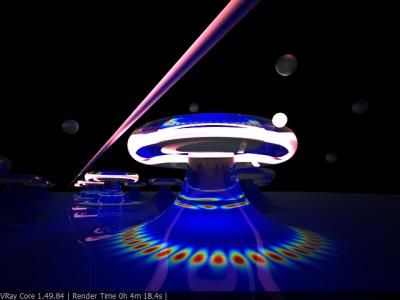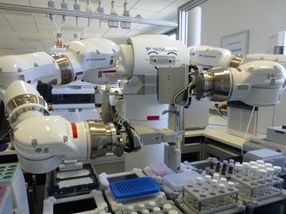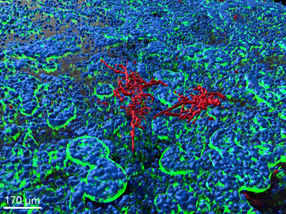Polymer nanoparticles used as drug carriers characterized using Nanoparticle Tracking Analysis
NanoSight reports on how Nanoparticle Tracking Analysis, NTA, is used to help with the characterization of polymeric nanoparticles synthesized as drug carrier systems. This work is being carried out at Saarland University by Dr Christian Ruge and his colleagues.
In the world of pharmaceutical sciences, a detailed and full characterization of particles synthesized as drug carrier systems is indispensable. The particle size is a crucial parameter to be monitored as this will affect the stability of formulations. It will also impact with respect to size-dependent effects in biological experiments, such as the uptake of drug systems by cells.
Nanoparticle Tracking Analysis is used as a complementary tool to a Malvern Zetasizer to characterize the nanoparticles prepared by Dr Christian Ruge, a research scientist in the Department of Biopharmaceutics and Pharmaceutical Technology in the group of Professor Claus-Michael Lehr. The particles are mainly polymer-based and typically in the size range from 100 nm to 400 nm. Especially when studying samples of moderate polydispersity (i.e. with a polydispersity index, PDI, of larger than 0.2), the group uses the NanoSight system to measure the preparations to identify particle populations which are not resolved by the Malvern system.
Talking of the benefits of using NTA rather than techniques such as scanning electron microscopy, SEM, or dynamic light scattering, DLS, Dr Ruge commented, "The fact that the system is performing particle-by-particle-based measurements is a huge advantage, especially in terms of its resolving power. The fact that the instrument gives a concentration value is very useful. I feel that "visualization" of the particles based on their scattered light gives more "insight" as to the sample and its behaviour. I personally find that it is more fun working with the NanoSight instrument compared to the Zetasizer. The interaction with the instrument and being able to visualize the individual particles makes it less of a "black box" instrument and more "interesting" for me as a scientist to use. Also, I have found that during demonstrations for students, the NanoSight appears to be more transparent and thus better suited for educational purposes."
Most read news
Topics
Organizations
Other news from the department research and development

Get the analytics and lab tech industry in your inbox
By submitting this form you agree that LUMITOS AG will send you the newsletter(s) selected above by email. Your data will not be passed on to third parties. Your data will be stored and processed in accordance with our data protection regulations. LUMITOS may contact you by email for the purpose of advertising or market and opinion surveys. You can revoke your consent at any time without giving reasons to LUMITOS AG, Ernst-Augustin-Str. 2, 12489 Berlin, Germany or by e-mail at revoke@lumitos.com with effect for the future. In addition, each email contains a link to unsubscribe from the corresponding newsletter.
























































